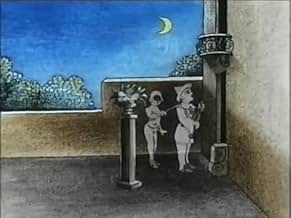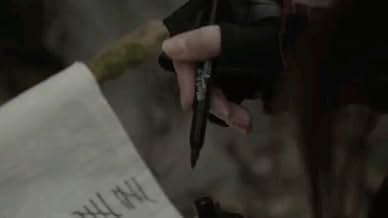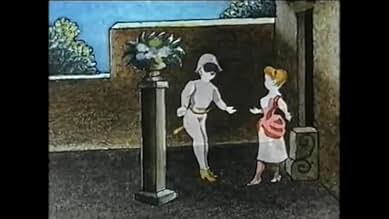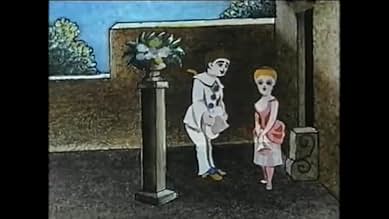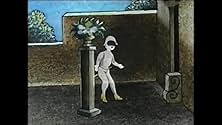AVALIAÇÃO DA IMDb
6,5/10
2,2 mil
SUA AVALIAÇÃO
Adicionar um enredo no seu idiomaOne night, Arlequin come to see his lover Colombine. But then Pierrot knocks at the door and Colombine and Arlequin hide. Pierrot starts singing but Arlequin scares him and the poor man goes... Ler tudoOne night, Arlequin come to see his lover Colombine. But then Pierrot knocks at the door and Colombine and Arlequin hide. Pierrot starts singing but Arlequin scares him and the poor man goes away.One night, Arlequin come to see his lover Colombine. But then Pierrot knocks at the door and Colombine and Arlequin hide. Pierrot starts singing but Arlequin scares him and the poor man goes away.
- Direção
- Roteirista
Avaliações em destaque
History lesson time! Back when films were viewed as magical gimmicks rather than an art form, inventor Reynaud made advancements on the standard zoetrope that children would be hypnotised by, and patented the praxinoscope. The difference? The ability to give further dimensions to the strips that are used to project a flowing film. And that's where Pauvre Pierrot comes in (roughly translated as "Poor Pete"), part one of three short stories that combined to produce Reynaud's 'Pantomimes Lumineuses'. Whilst the other two are considered lost, this third has had four minutes restored from its original fifteen minute runtime. And much to my surprise, it's just as viewable now as it was back in 1892.
The straightforward plot consists of a man teasing another man to scare him away from a woman he was trying to woo. The limited fluidity resulted in the story being as clunky as various frame transitions (occasionally pausing on every third strip), but for such an experimental ancient silent film, the story isn't exactly at the forefront. It's the innovation, and Reynaud was an innovator through and through. Just by staring at the detailed drawings that are able to exude featured facial expressions, you get a sense of commitment from Reynaud. The lack of narrative interest is seemingly masked by the grandeur of this static backdrop, and it's still stupendously amazing to watch today. Will I remember it next week? Most likely not. However it's imperative to appreciate the milestones that paved the way for films today, and Pauvre Pierrot is a technical achievement.
The straightforward plot consists of a man teasing another man to scare him away from a woman he was trying to woo. The limited fluidity resulted in the story being as clunky as various frame transitions (occasionally pausing on every third strip), but for such an experimental ancient silent film, the story isn't exactly at the forefront. It's the innovation, and Reynaud was an innovator through and through. Just by staring at the detailed drawings that are able to exude featured facial expressions, you get a sense of commitment from Reynaud. The lack of narrative interest is seemingly masked by the grandeur of this static backdrop, and it's still stupendously amazing to watch today. Will I remember it next week? Most likely not. However it's imperative to appreciate the milestones that paved the way for films today, and Pauvre Pierrot is a technical achievement.
"Pauvre Pierrot" is apparently the first animated film and you probably want to read IMDB's trivia section on how the film was made. All I know is that the copy floating about YouTube is gorgeous and looks nothing like you'd expect a film that is 127 years old!
The story is very simple...something I'd expect from 1892 since films were just invented and complex stories were still not made for several years to come. The animation is very jerky (due to a low cel count) but speeding up the film could correct this...so if you find a copy and play it on Media Player Classic (for example), you can double the speed and it would look better.
As for the story, it's very, very simple and involves the classic Commedia dell'arte character, Pierrot, moving about on the screen with a girl. Not exactly thrilling today...but remember...it was 1892 and for that time, this is a really amazing piece of art.
The story is very simple...something I'd expect from 1892 since films were just invented and complex stories were still not made for several years to come. The animation is very jerky (due to a low cel count) but speeding up the film could correct this...so if you find a copy and play it on Media Player Classic (for example), you can double the speed and it would look better.
As for the story, it's very, very simple and involves the classic Commedia dell'arte character, Pierrot, moving about on the screen with a girl. Not exactly thrilling today...but remember...it was 1892 and for that time, this is a really amazing piece of art.
This might be fairly basic animation compared to today's 3D computer-generated spectaculars, but it is in its own way just as remarkable. Emile Reynaud developed many marvels like this, and operated some rather tricky mechanism to screen it. Sadly, Reynaud was not only something of a perfectionist who personally hand-painted every image of every film, he also only trusted himself to operate the screenings. and therefore stretched himself a little too far. He was hugely successful before the advent of movies, but was incapable of progressing and stands as a singular warning of the fate that befalls any business that fails to adapt to a changing market. The film has historical importance, and as a bitter and impoverished Reynaud destroyed most of his films years after the film industry had made his shows obsolete, it's something of a minor miracle that it still exists today.
It is said that Pauvre Pierrot (1892) was the first animated film ever (it was presented with Le Clown et ses chiens (1892) and Un bon bock (1892)). Was exhibited in October 1892 when Charles-Émile Reynaud opened his Théâtre Optique at the Musée Grévin. It is probably the first usage of film perforations. Pauvre Pierrot originally consisted of 500 individually painted images, which originally was 15 minutes long, but the 1996 restoration made it 4 minutes long.
The story is about Harlequin (best-known of the zanni or comic servant characters from the Italian Commedia dell'arte), Colombina (a stock character in the Commedia dell'Arte, she is Harlequin's mistress, a comic servant playing the tricky slave type and wife of Pierrot) and Pierrot (is a stock character of pantomime and Commedia dell'Arte). It is a comedy, though nowadays it isn't that funny, in its time it must have been one of the funniest things that existed. I wish I was there when it happened.
The story is about Harlequin (best-known of the zanni or comic servant characters from the Italian Commedia dell'arte), Colombina (a stock character in the Commedia dell'Arte, she is Harlequin's mistress, a comic servant playing the tricky slave type and wife of Pierrot) and Pierrot (is a stock character of pantomime and Commedia dell'Arte). It is a comedy, though nowadays it isn't that funny, in its time it must have been one of the funniest things that existed. I wish I was there when it happened.
It's cheating a little to list this as a film as strictly speaking it's not one, though its maker Émile Reynaud pushed pre-cinema technology as far as it could go to achieve an experience practically indistinguishable from that of watching a theatrical presentation of an animated cartoon film. His Théâtre Optique featured his Praxinoscope, a radical development of old-established animation toys like the Zoetrope. This used rotating faceted mirrors and lenses that could project a succession of hand-drawn images from a paper strip with sprocket holes, allowing much longer sequences of continuous action than the short loops hitherto used in such devices. These images were then superimposed on a static background projected from a conventional magic lantern slide, prefiguring later cel animation techniques in which the image is broken down into a succession of layers with the minimum of movement in each one. The exhibition was completed with live narration and music.
Some of Reynaud's original elements survive (others he later threw in the Seine) and their affinity with film is demonstrated by the ease with which they can be reconstructed on modern film or video. Pauvre Pierrot was the first such production and is among the most charming, a simple tale featuring the traditional characters Pierrot, Arlequin and Colombine acting out their ancient love triangle. Some reconstructions replicate the translucent, slightly ghostly quality the characters would have had at the time. Sadly Reynaud's work was overtaken by the arrival of the cinema proper and he died a poor and unhappy man.
Some of Reynaud's original elements survive (others he later threw in the Seine) and their affinity with film is demonstrated by the ease with which they can be reconstructed on modern film or video. Pauvre Pierrot was the first such production and is among the most charming, a simple tale featuring the traditional characters Pierrot, Arlequin and Colombine acting out their ancient love triangle. Some reconstructions replicate the translucent, slightly ghostly quality the characters would have had at the time. Sadly Reynaud's work was overtaken by the arrival of the cinema proper and he died a poor and unhappy man.
Você sabia?
- CuriosidadesThe cartoon was hand drawn on hundreds of sheets of glass, each inlaid in a leather strips, through which a light was shone projecting the figures on a backdrop, as it was spooled from one reel to another, much like a modern film reel.
- ConexõesFeatured in O Mundo Mágico de Georges Méliès (2002)
Principais escolhas
Faça login para avaliar e ver a lista de recomendações personalizadas
Detalhes
- Data de lançamento
- País de origem
- Idioma
- Também conhecido como
- Poor Pierrot
- Consulte mais créditos da empresa na IMDbPro
- Tempo de duração5 minutos
- Mixagem de som
Contribua para esta página
Sugerir uma alteração ou adicionar conteúdo ausente

Principal brecha
By what name was Pauvre Pierrot (1892) officially released in Canada in English?
Responda
